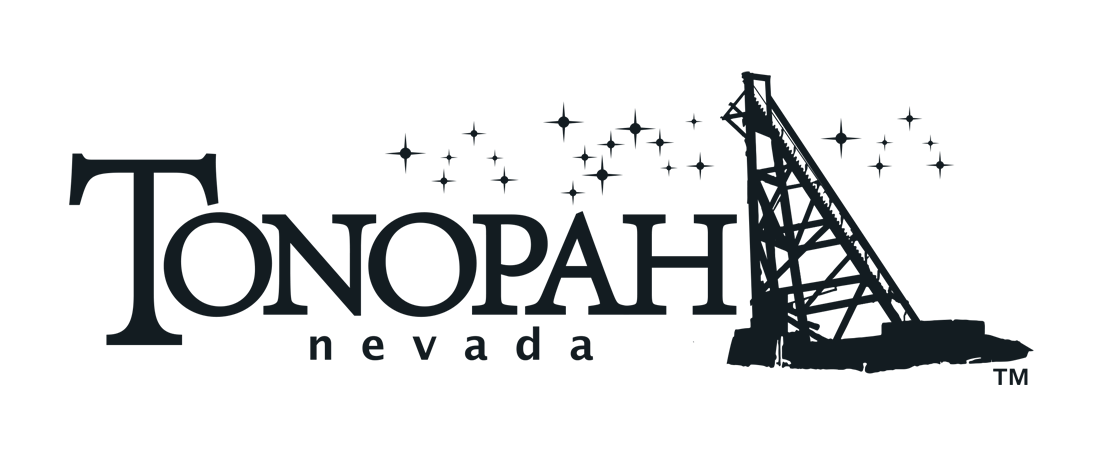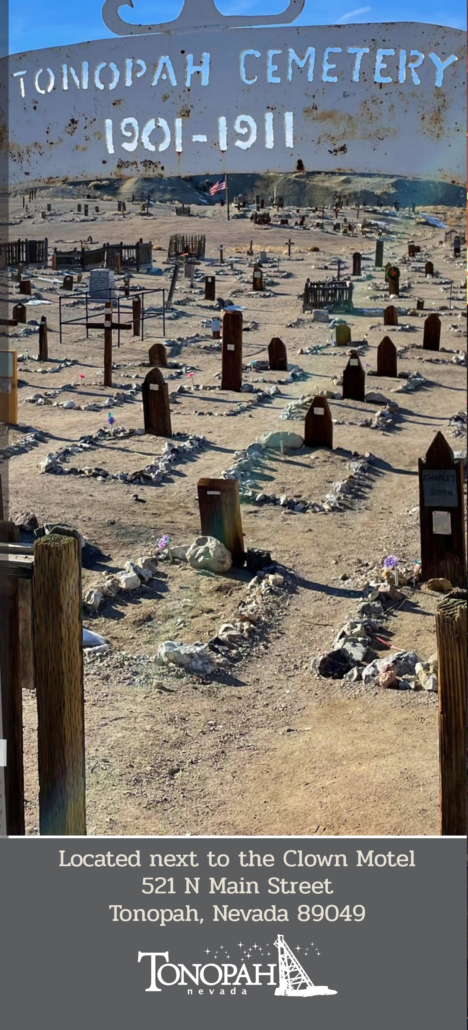The Old Tonopah Cemetery sits right next to the infamous Clown Motel, adding a mysterious charm—and for some, an eerie vibe—to the site.
This historic cemetery is the final resting place for many fascinating individuals, each with stories that bring Tonopah’s past to life.
Visitors can download a Walking Tour map online or pick one up at the cemetery entrance. Use the map to find notable graves and read about the people behind the names, or simply explore the over 300 graves scattered throughout the grounds. If a particular grave sparks your curiosity, jot down the name and date of death, then search old newspapers at Chronicling America for even more history.
For deeper research, visit the Central Nevada Museum’s excellent research library right here in Tonopah—you never know what hidden stories you might uncover! And if you discover an interesting tale, be sure to share it with us. For more detailed information, check out OldTonopahCemetery.com.
The Walking Tour highlights several notable figures, including:
Bina Verrault, a clever and elegant woman who fled New York City to escape the law after being involved in a scandal, ultimately dying in Tonopah.
George “Devil” Davis, Tonopah’s first African American political leader and prankster, said to still play tricks at the Tonopah Liquor Company
The Marojevich Brothers, who tragically died in a mine accident at the Belmont Mine
Big Bill Murphy, a local hero who lost his life rescuing others in the 1911 Belmont Mine Fire
Tom Logan, a respected Tonopah sheriff who was killed outside a brothel in Manhattan, Nevada
The Merten Brothers, three siblings who died within two years of each other, inspiring the community to come together in support of their family
The Old Tonopah Cemetery is open for exploration day or night, and visitors are welcome to park in the Clown Motel lot. It’s a captivating piece of Tonopah’s history well worth a visit.
Cemetery Myths and Facts
Myth #1: The old cemetery closed due to being overcrowded.
Fact: The old cemetery closed as the tailings of the Tonopah Extension Mine kept washing over the graves, destroying headstones. The Mine was planning an extension of its operation and wanted to prevent the cemetery property from expanding. They donated the property of the “new” cemetery that is still in use today.
Myth #2: A lot of the people buried in the cemetery died due to a “mysterious plaque”, also known as the “Tonopah plague”, that occurred in 1902.
Fact: The “plague” was a huge number of deaths in 1905, not 1902, due to pneumonia and assumed to be a result of a lack of sanitation, especially close to the slaughterhouses. 56 people died between January and April, according to the Secretary of State Board of Health in his report to Governor John Sparks. After an article in the San Francisco Call about the pneumonia scourge in Tonopah in 1901/1902, the Tonopah Daily Bonanza replied with a correction, arguing that they find the 27 deaths due to pneumonia between May 1901 and January 1902 in relation to a population of 1,500, not a heavy mortuary rate. There is nothing mysterious about the pneumonia cases in 1901/1902 or 1905 as they were well documented in the local newspaper.
Myth #3: The headstones have always listed the cause of death.
Fact: The cause of death was added in recent decades based on historic research conducted by historian Allen Metscher of the Central Nevada Historical Society. The cause of death was not listed on the original headstones. Only about 30% of headstones are original. Many headstones were rebuilt by the Tonopah Conservation Crew, under the guidance of Metscher, with old material, giving them an original look. Many of the graves were marked by Metscher using dousing rods, an old technique employed to locate groundwater or other disturbances in the ground such as gravesites. The technique proved to be accurate when the plot map was found years later in an attic in Round Mountain in the late 1970s.


